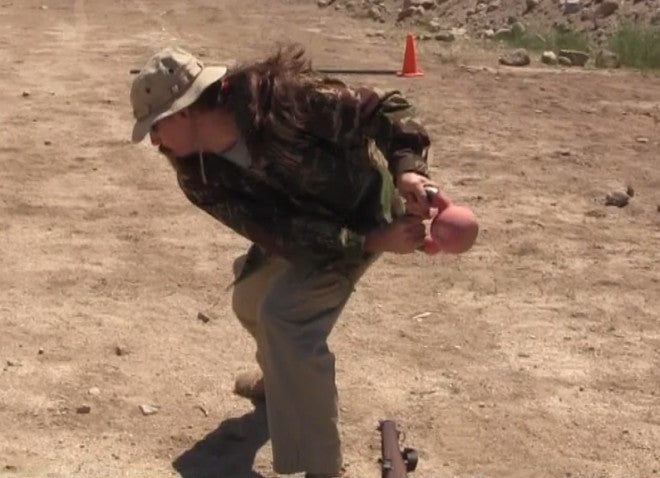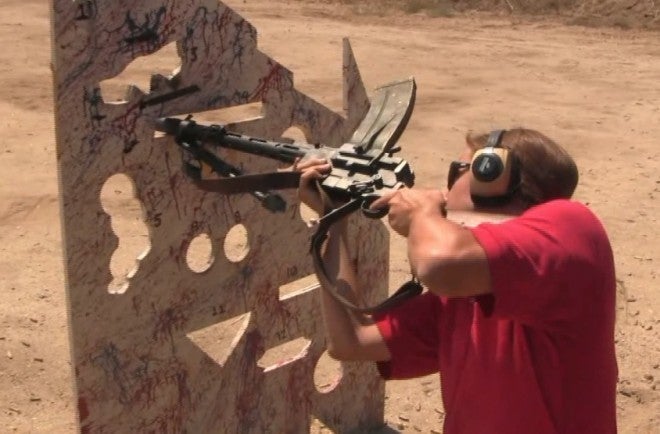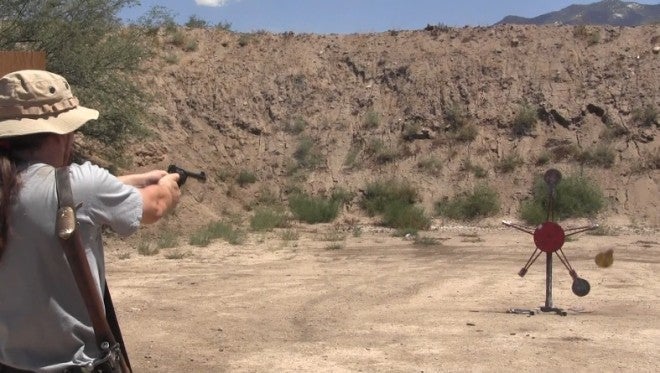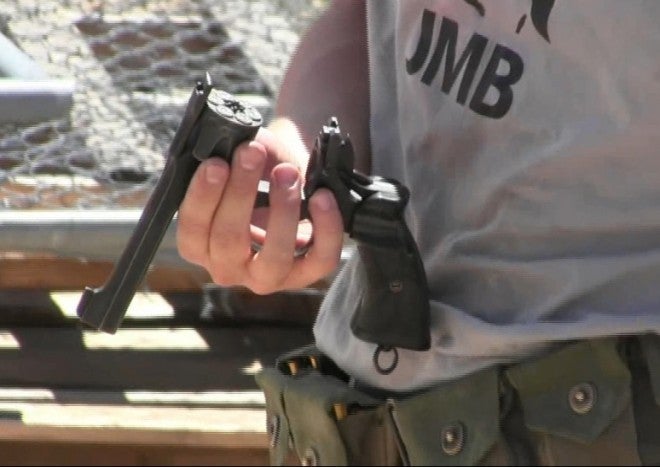Putting Vintage Guns to the Test
I have gotten enthusiastically into a style of shooting match that focuses on simulating stressful shooting situations, with unorthodox shooting positions, lots of weapon manipulation, and physical challenges to get the shooter tired and degres his/her coordination and fine motor skills. It’s a bit like 3-Gun, but without the shotgun element, and thus appropriately named the 2-Gun Action Challenge Match. More to the point, I’ve gotten into the habit of running different guns each month, and it has been a very cool learning experience that I would recommend to anyone who really wants a better understanding of military rifles and pistols.
The matches are intended to simulate actual combat conditions, at least to the extent such a thing is possible on a clean square range with no return fire and a Coke machine full of nice cold beverages. Where many practical-type matches are built around testing basic marksmanship with difficult small targets or large numbers of targets, the 2GACM tends to use fairly small round counts and a mixture of easy and moderately difficult targets, with truly difficult shots being fairly rare. Instead, elements are built in to push the shooter physically. Instead of how you shoot on a good plinking day, this style of competition tries to find out how you shoot when you’re tired and out of breath.

Author heaving a kettlebell (SMLE lying on the ground)
A typical stage might have a single 1/2 scale steel silhouette target, with the shooter starting at 150-200 yards with a kettlebell weight. At the buzzer, the shooter drops to prone and has to make a hit on the target. Then they throw the kettlebell as far as possible downrange, and the point where it comes to rest is the next shooting position. They run to that spot, drop to prone again, hit the target, and repeat until they have gotten the kettlebell across a finish line at 50 yards or so from the target. Another typical stage had a half dozen paper targets (far enough downrange that hits aren’t visible to the shooter) each half covered in a random camo-looking pattern of “hard cover” on which hits don’t count. The shooter has a limited number of rifle rounds to fire from the start line (not enough to make the requires 2 hits on each target), after which they must advance downrange with a handgun to make up any necessary hits on the paper and engage a pair of steel targets at the end of the range. Stage design like this really tests a shooter’s ability to effectively run their guns and also strategize and adapt on the fly.
So what does this have to do with old guns? Well, I think the matches do a better job than most anything else at simulating real-life combat use. When you go prone to shoot during a relaxing day of plinking, you set the rifle carefully down on a mat or grass while you get into a comfortable shooting position. When you’re on the clock at 2GACM, you tend to throw yourself into the sand, and it’s not unlikely that it’ll get into your rifle in the process. Or you’ll find yourself confronting a shooting port that is short and wide, requiring you to tip the rifle over 90 degrees in order to bring your sights on target. Or you have to reload your pistol from a pile of magazines dumped in a bin (with a varying number of rounds in them) instead of from your carefully-constructed custom mag pouches. It’s elements like this that really bring out the true nature of your guns.

Author shooting a semiauto Madsen LMG through an awkward port
This sort of range experience can really give you a new perspective on guns, seeing them more as their military users might have in wars long past. How easy or difficult is it to actually reload a given gun when you’re hot and sweaty and tired and just finished humping an ammo can full of rocks? Where can you hold a hot rifle and not accidentally burn yourself (I have a nice little scar from accidentally touching the barrel on that Madsen)? How well does the sling work when you have to transition to shooting your pistol?
In one match, I ran a 1916 SMLE rifle, while a friend used a WWII K98k Mauser. I had always figured the Enfield would have a nice speed advantage over the Mauser, with its cock-on-closing bolt and larger magazine – and on the pinking range I expect I could prove that pretty easily. But under the conditions of this match some of the Enfield’s weaknesses became apparent, and I would no longer be so quick to assume its superiority. The Mauser’s controlled feed allowed it to sail through a couple dirty stages, while my Enfield bolt got pretty sticky and started having intermittent failures to feed. The Mauser had some problems as well, but its more reliable magazine and smoother clip loading gave it the overall advantage.
On the other hand, I’ve also had surprises the other way, with a gun I expected to be mediocre really growing in my estimation. Specifically, the British Enfield No2 MkI* revolver (essentially identical to the Webley Mk IV). The Enfield revolver is a double action only piece, with no hammer spur or single action notch in the firing mechanism. It has a relatively light pull for a DA revolver, but it’s still long and heavy to a 1911 guy like me. It has a pretty wimpy round, too – the .38/200, which is fires a 200gr bullet at 620 fps for a mere 170 ftlb of muzzle energy. In fact, I brought my 1911 to the match that month as a backup, in case the Enfield proved hopeless on the range. Much to my happy surprise, the revolver worked extremely well. It’s hard to quantify, but the No2 Enfield just worked without me needing to give it much thought. It was well balanced, had reasonably good sights, pointed well, and the DA trigger pull allowed me to put shots out quickly and accurately. The wimpy cartridge (which actually was quiet enough on one stage that the scoring timer didn’t hear my shots) meant minimal recoil, and fast followup shots, while still being potent enough for military sidearm needs. Nothing about it stands out as really excellent on the target range, but the overall package proved remarkably effective.

Author engaging a Texas Star with a No2 MkI* Enfield revolver
VIDEO
I came away from that match with a newfound respect for the Enfield revolver. It is certainly not a high-speed-low-drag racegun, but it’s something I would rather have: a sidearm that simply does its job and works every time without any fuss. And I wouldn’t have realized that without subjecting it to a match like the 2GACM.
I really can’t recommend this sort of match highly enough for the shooter who wants to push both his or her shooting skills and get a deeper understanding of his or her guns’ performance and characteristics.

